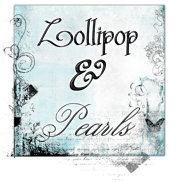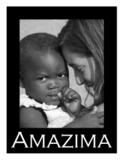~~~~~~~~~~~~~~~~~~~~~~~~~~~~~~~~~~~~~~~~~~~~~~~~~~~~~~~~~~~~~
“Though Christmas is a wonderful time of year, many Christians have concerns about what appear to be non-Christian Yuletide traditions. There is no question that Christians should always be careful about accepting traditions or practices that are common in the “world,” but there may be more that believers can “salvage” from Christmas than one might think. In fact, some aspects of the traditional celebration of Christmas were originally Christian and later secularized, so these traditions can be reclaimed for the glory of God.
How did Christmas begin? Many will be surprised to find that Christians did not celebrate Christmas very early in Church history. The early Christians emphasized Easter and Pentecost because they dealt with the resurrection of Jesus and the sending of the Holy Spirit and because there was an Old Testament feast that coincided with both celebrations. By the fourth century A.D., we find the Church celebrating the 25th of December as the birthday of Christ. Why? First, the early Christians probably Christianized a secular Roman holiday devoted to worshiping the Sun god. The Feast of Saturnalia, as the Romans called it, included the giving of gifts, colorful lights, special trees and much feasting. The traditions of this secular celebration could be converted for Christian purposes so easily that with Roman Empire’s acceptance of the Gospel, Christians used December 25th to celebrate the birth of the Savior. In this way, Christmas trees, lights, giving of gifts and feasting became part of the honoring the birth of Jesus. Secondly, December 25th is probably very close to the actual day on which Jesus was born. Originally, Bible scholars thought that Jesus had to be born in the spring or summer since the Bible tells us that on the night Jesus was born, there were shepherds in the fields with their flocks. The thinking was that shepherds would never have their flocks in the field in winter. More recent research has indicated that the temple flocks were in the fields throughout the year. It would even make more sense for the angels to announce the birth of the Lamb of God to those who were caring for the sacrifices of the Old Covenant. Also, Jewish tradition itself suggests that there was a little known feast at the time of the birth of Jesus. After all, we celebrate the birth of our nation on July the 4th, when the day on which Congress voted for independence was actually July 2nd. It doesn’t change how much the day means to us as Americans. In the same way, the important thing about Christmas is that we set aside a day to celebrate the birth of Jesus.
What about Old Santa Claus? The aspect of Christmas that disturbs most Christians is the tradition of Santa Claus. Many believe that he has almost replaced Jesus at the heart of Christmas celebrations. This is not far from the truth. Astonishingly, no one would be more opposed to the removal of Jesus from His throne at Christmas than the original Santa Claus, Pastor Nicholas from the city of Myra. If we knew his story, we would be happy to remember him every Christmas. We do not know a great deal about this great man. But we do know that Nicholas was born of wealthy parents in modern day Turkey. He became a Christian early in his life and suffered in prison for many years when the Roman Emperor Diocletian was brutally persecuting the faith. Though thousands of believers were martyred, Nicholas was eventually released. After a t rip to the Holy Land, Nicholas settled in Myra, a city in the region of Lycia, on the southern coast of what is now Turkey. He soon became Bishop of that region and was known extensively for his compassion, for his generosity and for the miracles that followed his ministry. The story of his generosity that has made him famous is typical of his love and compassion. He became aware of the daughters of a poor sailor who faced a dowry. A dowry was a gift provided by the family of a new bride to the family of the groom. Without such a gift, women could rarely be married, especially among the poorer classes. The three daughters of the sailor were destined to lives of degradation and possibly even prostitution. When Nicholas learned of this situation, he quietly went to the house of the sai9lor and left three bags of gold for the three daughters. When news of this act of generosity leaked out, the beloved Nicholas was held in even greater affection by the people.
To this day, the Catholic Church regards Nicholas as the patron saint of children and sailors. After his death, Nicholas’ life was such an example of Godliness that the Church canonized him, which means they made him an official saint. The church set aside a special day, December 6, when all Christians were to remember Nicholas and it was called St. Nicholas day. On this day, the Bishops of the church would go around their cities in the special robes that Bishops wore and they would give gifts to children and do acts of charity. This practice continued for many centuries and, eventually, Christians merged St. Nicholas day with Christmas because many of the traditions were the same. Dutch settlers brought the celebration of St. Nicholas to America in the early years of this country. The Dutch word for St. Nicholas was “Sinterklaus” and English Americans eventually pronounced this “Sant Claus” or "Santa Claus.” In England, St. Nicholas is known as Father Christmas. In Russian he is Grandfather Frost and in France he is known as Pere Noel. All these names speak of the same godly pastor and Bishop who lived so long go….










































2 comments:
Wonderful! I love learning about the history behind our traditions. This year (since our son is just about old enough to understand) we honored St. Nicholas on 12/6... that's when we went to visit "Santa" and open a few small gifts. I'm hoping that will help us separate the two traditions and keep us from slipping too much into commercialism!
Wonderful to know a friend of Katie... I am amazed at how the LORD is using her and her work so powerfully. It's a privilege to help spread the word!
Merry Christmas!
Please translate your comment to English, Doris.
Post a Comment